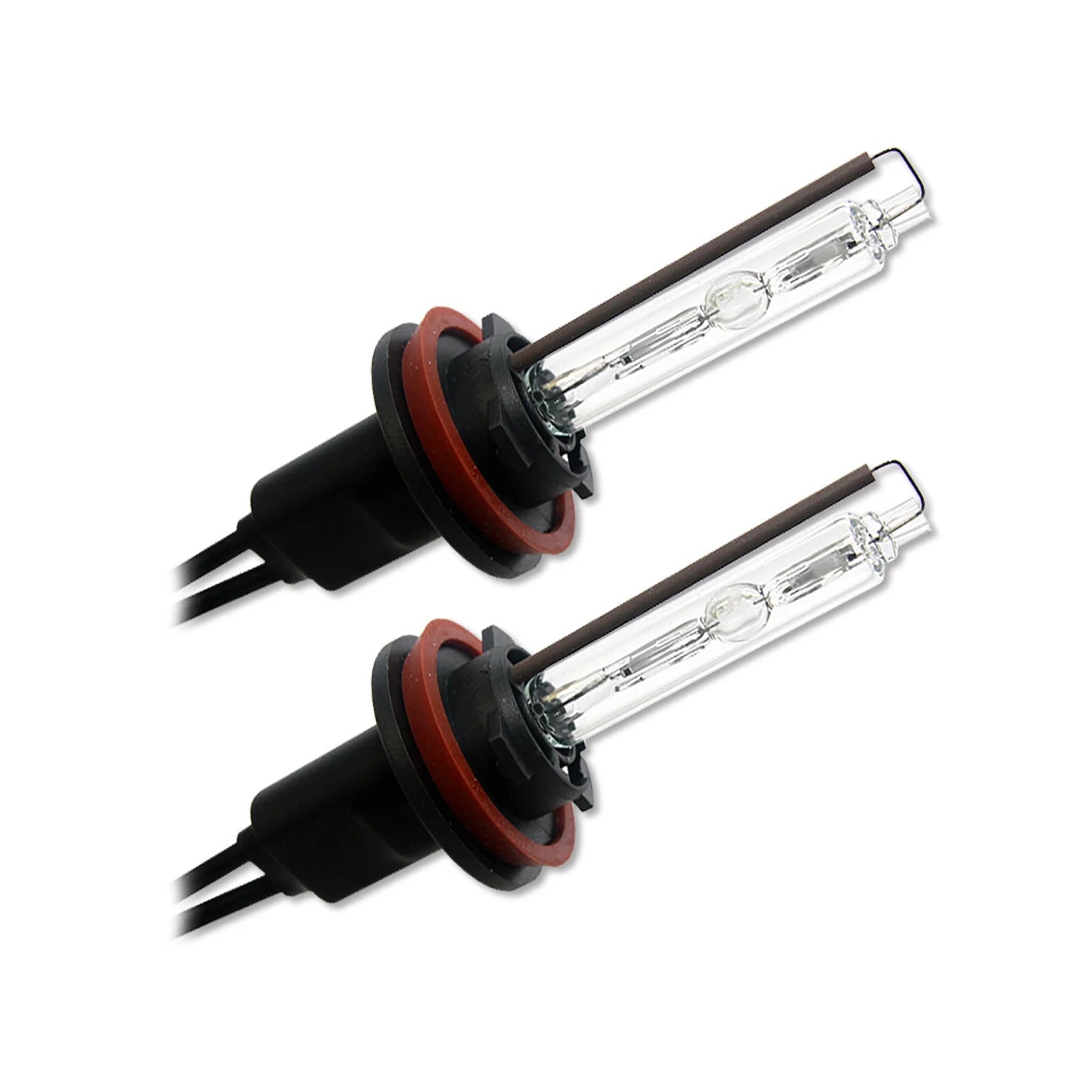
LED vs. Xenon HID Headlight Bulbs - Which Are Better?
For car enthusiasts, the choice between High-Intensity Discharge (HID) and Light-Emitting Diode (LED) headlights has been a topic of intense debate. As technology advances, both options have become increasingly popular, each with its own set of advantages and disadvantages. In this article, we will dive deep into the world of automotive lighting, comparing HID and LED headlights to help you make an informed decision for your vehicle.
What are HID Headlights?

HID headlights, also known as Xenon lights, have been around since the early 1990s. They work by creating an electric arc between two electrodes inside a bulb filled with xenon gas. This arc produces an incredibly bright, white light that closely resembles natural daylight. HID headlights are known for their superior illumination, casting a wider and longer beam compared to traditional halogen bulbs.
Advantages of HID Headlights:
- Brightness: HID headlights are generally brighter than LEDs, which can improve visibility at night.
- Cost: They are often less expensive to purchase and install than LED options.
- Color Temperature: HIDs provide a color temperature that is closer to daylight compared to most LEDs, which can be easier on the eyes for some drivers.
Disadvantages of HID Headlights:
- Glare: HID headlights can produce a significant amount of glare, which can be uncomfortable for other drivers on the road.
- Warm-Up Time: They take a few seconds to reach full brightness, which can be a disadvantage in situations where immediate full light output is needed.
- Heat Output: HIDs burn hotter than LEDs, which may require additional heat management systems.
- Inefficiency: A portion of the light emitted by HID headlights is in the infrared spectrum and invisible to humans, making them less efficient than LEDs.
- Lifespan: HID lights can have a shorter lifespan compared to LEDs, potentially leading to more frequent replacements.
What are LED Headlights?

LED headlights are a more recent development in automotive lighting technology. They consist of a cluster of small, individual light-emitting diodes that produce light when an electric current passes through them. LED headlights are known for their energy efficiency, instant response, and compact size.
Advantages of LED Headlights:
- Energy Efficiency: LED headlights consume significantly less power than both halogen and HID bulbs, which can lead to improved fuel economy and reduced strain on your vehicle's electrical system.
- Instant On: Unlike HID headlights, LED headlights reach full brightness immediately when switched on, providing instant illumination without any warm-up time.
- Compact Size: LED headlights are much smaller than traditional bulbs, allowing for more creative and aerodynamic headlight designs.
- Longevity: LED headlights have an impressive lifespan, with some lasting up to 50,000 hours or more. This means they may never need to be replaced throughout the life of your vehicle.
Disadvantages of LED Headlights:
- Cost: Like HID headlights, LED headlights come with a higher price tag compared to halogen bulbs. However, their long lifespan can offset this initial cost over time.
- Heat Management: LED headlights generate a significant amount of heat, which must be properly managed to prevent premature failure. This often requires additional cooling systems, adding to the complexity and cost of the headlight assembly.
- Limited Availability: While LED headlights are becoming more common, they are not yet widely available for all vehicle makes and models, especially older cars.
Performance Comparison:
When it comes to performance, both HID and LED headlights offer significant improvements over traditional halogen bulbs. HIDs excel in terms of brightness and color temperature, providing a wider and longer beam of light that closely mimics natural daylight. This can greatly enhance visibility and reduce eye strain during nighttime driving.
LEDs, on the other hand, offer instant illumination and unmatched energy efficiency. They also have a longer lifespan, which can translate to cost savings in the long run. However, LEDs may not quite match the sheer brightness of HIDs, particularly in lower-end LED headlight systems.
Installation and Maintenance:
Installing HID or LED headlights can be a complex process, often requiring professional assistance. In many cases, the entire headlight assembly must be replaced, as opposed to simply swapping out the bulbs. This can be a significant undertaking, especially for those who are not mechanically inclined.
When it comes to maintenance, both HID and LED headlights have their advantages. HIDs have a longer lifespan than halogen bulbs, but they may require periodic alignment to ensure proper beam focus and minimize glare. LEDs, with their impressive longevity, may never need to be replaced, but the cooling systems that manage heat generation can add complexity to the overall headlight assembly.
Legal Considerations:
It is important to note that not all HID and LED headlight kits are legal for road use. Many aftermarket kits are designed for off-road use only and may not comply with local and federal regulations. Before upgrading your headlights, be sure to research the specific laws in your area and choose a kit that is DOT (Department of Transportation) compliant to avoid potential legal issues.
Conclusion:
The debate between HID and LED headlights is one that will likely continue as technology advances. Both options offer significant improvements over traditional halogen bulbs, with HIDs excelling in brightness and color temperature, and LEDs providing energy efficiency and longevity.
Ultimately, the choice between HID and LED headlights will depend on your specific needs, preferences, and budget. If you prioritize maximum brightness and a color temperature closest to natural daylight, HIDs may be the way to go. If you value energy efficiency, instant response, and a longer lifespan, LEDs may be the better choice.
Regardless of which option you choose, upgrading to HID or LED headlights can greatly enhance your nighttime driving experience, providing improved visibility, reduced eye strain, and a more modern look for your vehicle. As with any modification, be sure to do your research, choose a reputable brand, and follow all installation and legal guidelines to ensure the best possible results.

Leave a comment